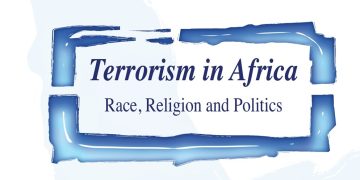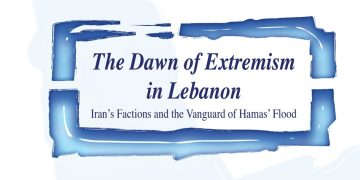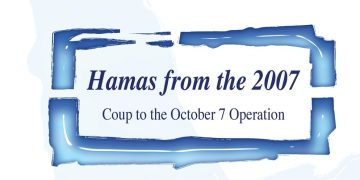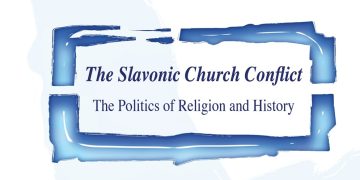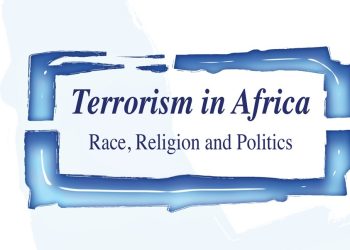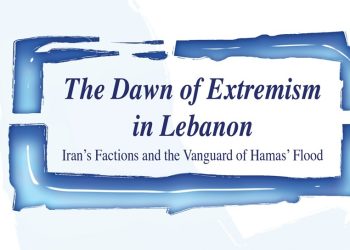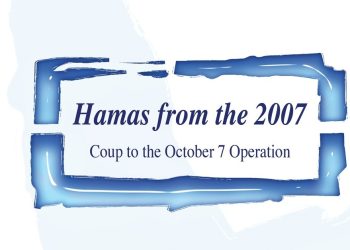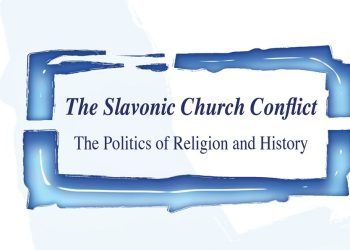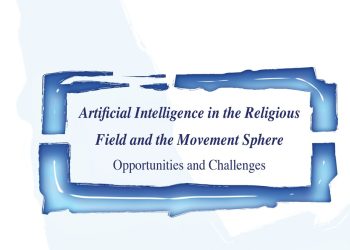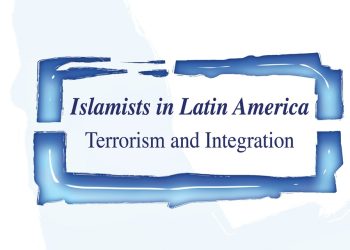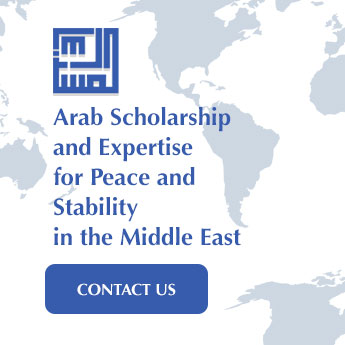January 2024
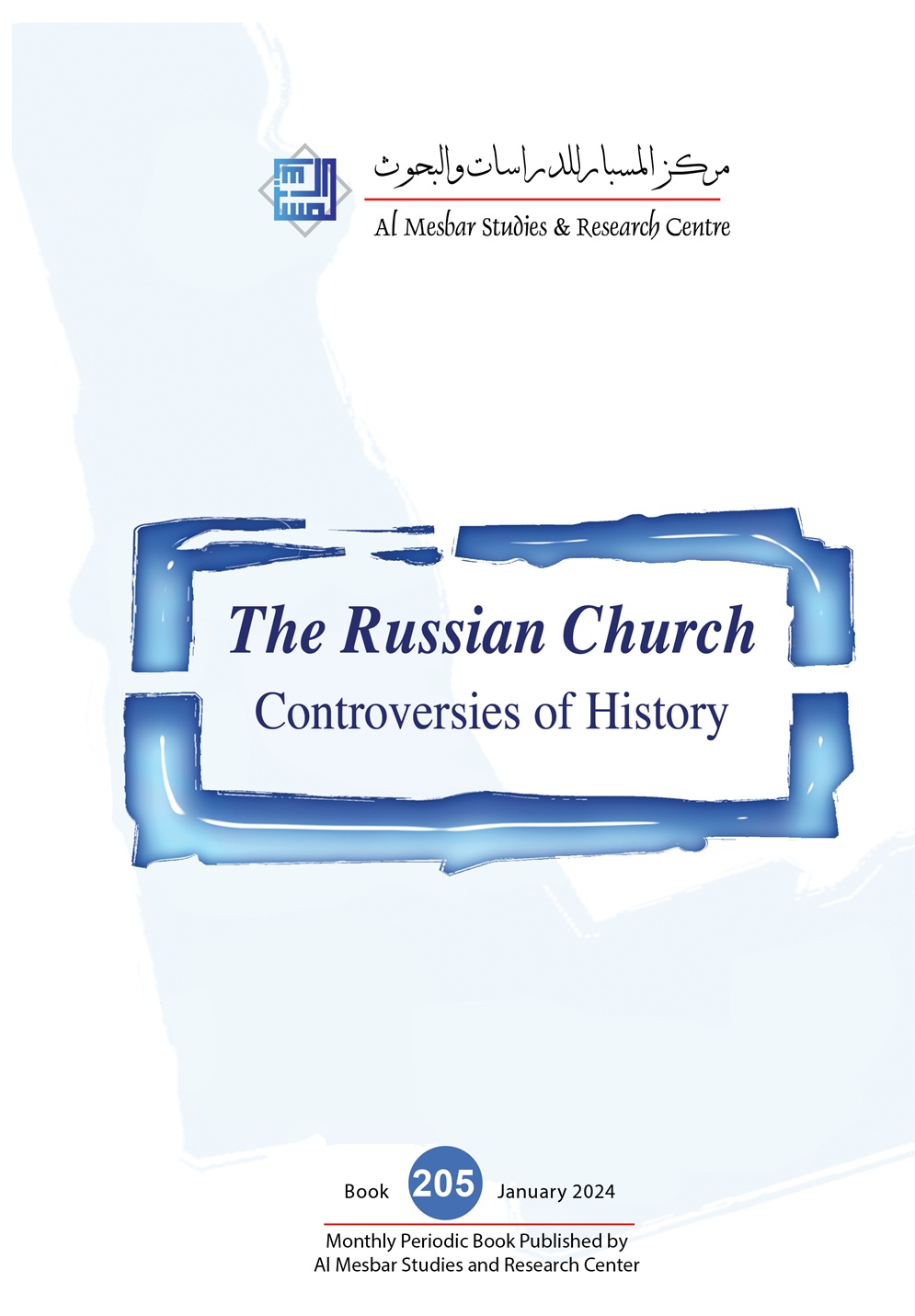 In its 205th book, “The Russian Church, Controversies of History,” published January 2024, the Al-Mesbar Center for Studies and Research explores debates over the history of the Russian Orthodox Church. It begins with the relationship between the Church and the State in Russia from 1700 to 1917 and addresses challenges faced by the Church after Peter the Great’s reforms introduced Western values unfamiliar to Russian traditions. The book discusses various divisions within Russian Christianity after the Romanov era and the rise of sects such as the “Old Believers,” who rejected modernization. It also examines the Church’s relationship with Jews since 1721 and its role in the 1905 “Decree of Tolerance.” Additionally, the book explores the theory of “Moscow as the Third Rome” which depicted Russia as the heir of Rome, Byzantium, and the protector of Orthodoxy, and analyzes how this perception has influenced Russian foreign policy.
In its 205th book, “The Russian Church, Controversies of History,” published January 2024, the Al-Mesbar Center for Studies and Research explores debates over the history of the Russian Orthodox Church. It begins with the relationship between the Church and the State in Russia from 1700 to 1917 and addresses challenges faced by the Church after Peter the Great’s reforms introduced Western values unfamiliar to Russian traditions. The book discusses various divisions within Russian Christianity after the Romanov era and the rise of sects such as the “Old Believers,” who rejected modernization. It also examines the Church’s relationship with Jews since 1721 and its role in the 1905 “Decree of Tolerance.” Additionally, the book explores the theory of “Moscow as the Third Rome” which depicted Russia as the heir of Rome, Byzantium, and the protector of Orthodoxy, and analyzes how this perception has influenced Russian foreign policy.
The first study focuses on the Church-State relationship from 1700 to 1917, tracing its development from the reign of Emperor Peter the Great (1689-1725), founder of the Russian Empire in 1721, through to the Romanov dynasty (1613-1917).
The study examines internal challenges the Russian Church faces in serving the people after Peter the Great’s eighteenth-century reforms. Before these reforms, family, social life, and governance were regulated by church teachings, and the Russian worldview was rooted in Orthodoxy. The reforms partially weakened traditional societal foundations by introducing Western values viewed as alien, leading to societal division and deepening disparities among social classes with unequal rights and duties. These reforms challenged the Church, requiring clergy training to address them.
In 1721, Peter the Great established a synod led by a clergyman loyal to the empire and made the Emperor the head of the Church, transforming it into a state organ. This sparks opposition within the Church and rejection of European modernization.
The Church’s subordination to the state diminished its popularity, as critics saw it as a state tool. Its silence on serfdom caused liberal circles to view the Church as complicit in social and political injustices. Liberal criticism shifts from accusing the Church of conservatism to labeling it backward and tyrannical, eventually fueling anti-religious ideas.
These changes contributed to the Russian Revolution in the early twentieth century. The denial of peasants’ rights in 1870 undermined the social structure’s moral foundation, especially since peasants comprised over 75% of the population. The Church failed to fully recognize this before the 1905-1906 revolution, adding to social unrest. In 1906, the Moscow Academy noted that theological graduates lacked knowledge of church history and spiritual literature. While Peter the Great’s reforms aligned the Church with the state, slow education and assimilation caused it to lose much credibility, though it retained some hope for internal reforms, which occurred frequently in subsequent decades as Russian elites appreciated their value.
Ukrainian researcher Andriy Mykhaleyko presents religious debates between Kiev and Moscow regarding Christianity’s spread in the East Slavic region and ecclesiastical development after the Kiev state’s collapse. He bases his theory of the Kiev-Moscow conflict on political legitimacy, contending that differences between rival historical schools are relatively minor. He discusses the East Slavs’ conversion under Prince Vladimir I, the political changes after the Mongol invasion, Ukraine’s fall under Polish-Lithuanian rule, and major political and religious differences under Russian rule. He explores the fall of Constantinople in 1453 and the Russian Church’s mystical reinterpretation of this event, contrasting it with the Ukrainians’ open dialogue with other sects under the Polish-Lithuanian Commonwealth. He explores Russian religious concepts and their political manifestations, casting a critical eye on existing divisions.
Researchers Elena Pavlovna Shemyakina and Ilyin Nikolaevich Vsevolod analyze the motives and effects of Church modernization and resulting divisions. Russian Christianity, in their telling, evolved in several stages since its adoption in the tenth century. The Romanov era (starting with Mikhail Fyodorovich Romanov, 1613-1645) and major expansions compelled emperors to adopt Christian values unfamiliar to traditional Tsarist Russia, aiming to strengthen political power and accommodate new peoples under the empire. Many Russians viewed these changes as departures from “the true faith” or as heresies imposed by misguided emperors or patriarchs. Consequently, Russian Orthodoxy splits into sects, chiefly the “Old Believers,” who preserved Muscovite Tsarist traditions, and the official Church’s “General Sect.” This division gave rise to conflict, with occasional alliances to oppose Catholics or Protestants, leading the Old Believers to disperse across 17 countries worldwide.
The study thoroughly explores this schism, especially political and national factors among those rejecting new rituals, describing the “sacrificing” of national Russian rituals for universal Greek ones to elevate Russia as Orthodox leader. This conflict extends beyond religion, shaping the political identities of the two main opposing groups within Russia, as clarified at the study’s conclusion.
Russian historian Vladimir Prokhorovich Buldakov examines the Church’s relationship with Jews between 1721 and 1917. The year 1721 marked a series of major transformations: Peter the Great declared the Russian Empire, ending the Patriarch’s role and creating the Orthodox Church of the Russian Empire, now fully under state control. This leads the Church to adopt unusual religious positions, including hostility toward Jews, influencing the 1905 “Religious Tolerance” decree. Previously, Russians had not been known for the spasms of anti-Jewish violence recurrent in Western Europe after its conversion to Christianity, but persecution worsened from the mid-sixteenth century onwards. After the 1917 revolution, both “white” imperial loyalists and “red” Bolsheviks employed antisemitic rhetoric to accuse each other of Jewish allegiance.
Tatiana Leontieva, Dean of History at Tver State University, explores the State-Church relationship in the Russian Empire and its impact on other Christian sects after the 1054 Great Schism. She discusses the Russian view of Western use of religion for political aims to weaken Russia, showing historical examples and contending that Russian policy tends to be reactive rather than proactive.
Leontieva highlights the tense relations between the Russian Orthodox Church and Catholics and Protestants during the imperial era, rooted in the 1054 schism and Russia’s sectarian policies, which mirrored European trends with shifts between tolerance and discrimination depending on the political environment. Catholics faced pressure after Poland was annexed by Russia, due in part to clerical support for Polish independence movements. Russian Lutherans initially faced little trouble before World War I but later suffered repression for the stigma of being deemed “pro-German.” The Orthodox Church contributed to anti-Lutheran propaganda, characterizing them as enemies of the Russian people. The 1905 Revolution and religious freedom improved Catholics’ and Lutherans’ lots but failed to commit to full equality with Orthodoxy. After 1917 and the fall of the monarchy, pressure temporarily eased, though popular distrust lingered.
Pavel Kuzenkov’s study, “Moscow – Russia… The Successor to Byzantium and the Emergence of the New Stronghold of Orthodoxy,” analyzes the Church-Empire relationship from the Roman Empire through Byzantium to Russia. It emphasizes the Christian concept of the Empire as protector of religion and the Church, transferring to Russia after Constantinople’s fall. This gave rise to the idea of “Moscow as the Third Rome,” the sole legitimate imperial successor and last world state destined to witness Christ’s second coming.
This theory draws on the belief that the world ends after 6,000 years of creation per the Septuagint Bible calendar, coinciding with Christ’s return, likening the 6,000 years to the six days of creation in Genesis. Some theologians viewed the Roman Emperor as the “Katekhon,” the barrier delaying the Antichrist’s arrival. The spread of this belief accelerated after Constantinople fell in 1453 to Ottoman Sultan Mehmed the Conqueror, leaving Moscow as the main center of Orthodox Christianity. (The Russian Church had previously gained independence from Constantinople in 1448 with the selection of the Metropolitan Iona.)
Although initially unofficial, Patriarch Jeremiah II of Constantinople endorsed the idea in 1589 upon becoming the first Russian patriarch, viewing Russia as the spiritual protector of Orthodoxy. This crowns efforts by powerful rulers like Ivan III and Vasily III to unify the country under Moscow’s banner and its church fathers such as Augustine and John Chrysostom, without claiming political rights over former Byzantine lands.
In conclusion, the Al Mesbar Center for Studies and Research thanks the contributing researchers and those who helped publish the book. Special thanks go to Rashid Al-Khayoun, who proposed the issue, and Ahmed Lutfi Dahshan, who coordinated the publication. We hope this book enriches the Arab library.


